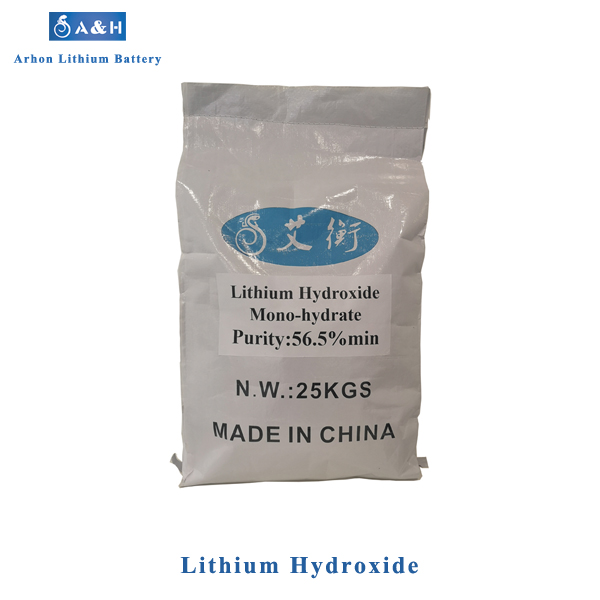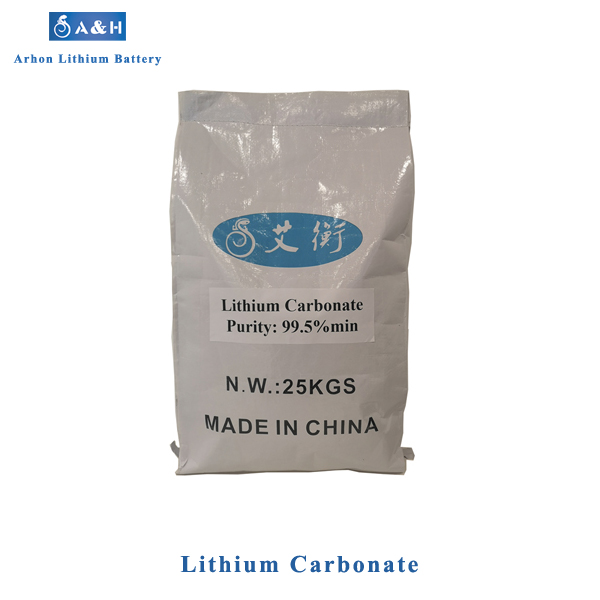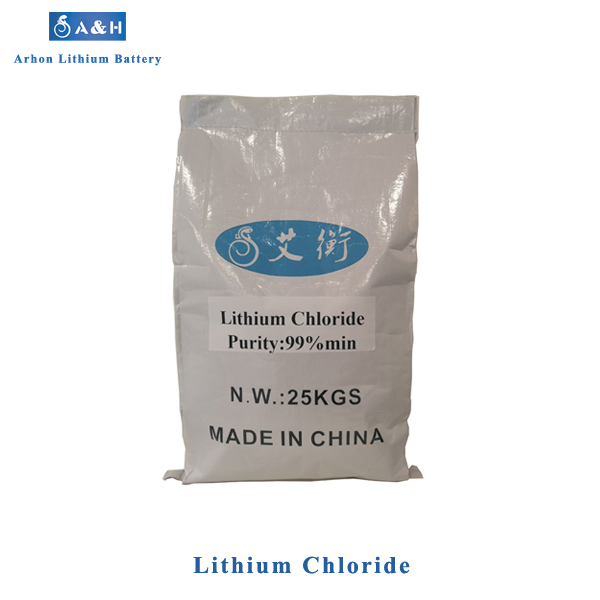Lithium Hydroxide Market - Forecast(2022-2027)
Lithium Hydroxide Market Overview
Lithium hydroxide market size is forecast to reach US$2.6 billion by 2027, after growing at a CAGR of 8.2% during 2022-2027. Lithium hydroxide is manufactured industrially through a metathesis reaction between lithium carbonate and calcium hydroxide, which does not feature a hydrogen bond network. Globally, the increasing usage of monohydrate & anhydrous lithium hydroxide powder as a thickener in lubricating greases is estimated to fuel the market over the forecast period. In addition, the growing demand for electric vehicles that use lithium batteries, as well as the increasing demand for power tools that use lithium hydroxide NCA cathode, are major factors driving the market growth. However, rising concerns about the toxicity of lithium hydroxide are expected to limit the growth of the lithium hydroxide market.
COVID 19 Impact:
The Covid-19 pandemic situation negatively impacted the growth of the lithium hydroxide industry in the year 2020. In 2019, buyers from other countries primarily Japan and South Korea, bought more than 80% of China's hydroxide production. Due to complications with customs clearance caused by the outbreak, users in other countries were finding it increasingly difficult to obtain lithium hydroxide. Domestic consumers also suffered difficulties as a result of transportation disruptions and increased lithium hydroxide price in 2020. For instance, Ganfeng lithium headquartered in China, reported that it had increased its battery grade lithium hydroxide spot prices by no more than 10%, citing increasing raw material costs and transportation costs.
Lithium Hydroxide Market Report Coverage
The report "Lithium Hydroxide Market Report – Forecast (2022-2027)" by IndustryARC covers an in-depth analysis of the following segments of the lithium hydroxide industry.
Key Takeaways
- The Asia-Pacific region dominated the lithium hydroxide market due to the rising growth of the automotive industry. For instance according to the International Trade Administration, the commercial vehicle sales increased by 20% year over year to 5.23 million units in 2021.
- An increase in demand for lithium batteries as a replacement to gasoline in a variety of applications is one of the primary factors driving the growth of the lithium hydroxide market.
- In the foreseeable future, the rising production of lithium hydroxide is estimated to raise the growth of the market. For instance, as per the report published by the Department of Industry, Science, Energy and Resources in 2020, the global production for lithium hydroxide in 2025 is estimated to reach US$ 600 Thousand Tonnes.
Lithium Hydroxide Market Segment Analysis – By Application
Li-Ion batteries held the largest share with 28.3% in the lithium hydroxide market and is expected to continue its dominance over the period 2022-2027. The increasing demand for energy resources, as well as the regulatory push towards non-renewable energy resources such as alternative clean fuels, increased fuel efficiency, and carbon emission standards, are likely to create a favorable environment for the lithium-ion battery sector. The development of lithium-ion battery materials that allow batteries to withstand high temperatures would improve the product's safety and reliability. Increasing government investments for the growth of the lithium ion batteries is driving the market growth. For instance, to promote EVs and lithium ion batteries, the Indian government launched the Faster Adoption and Manufacturing of Hybrid and Electric Vehicle (FAME) scheme in 2019 with a Rs.10,000 crore budget. The scheme was set to expire in 2022. To encourage the purchase of 7,090 electric buses, 35,000 four-wheelers, 500,000 three-wheelers, and 1 million two-wheelers, the government planned to offer incentives. The Indian government extended the second phase of the FAME scheme by two years, to March 31, 2024, in June 2021. To encourage the use of lithium ion batteries, the government has authorized FAME subsidies only for lithium ion. As a result of the aforementioned factors, with the rising usage of Li-Ion batteries the demand for lithium hydroxide is estimated to increase at the fastest rate throughout the projection period.
Lithium Hydroxide Market Segment Analysis – By End-Use Industry
The transportation sector dominated the lithium hydroxide market in 2021 and is projected to grow at a CAGR of 8.7% during 2022-2027. Lithium Hydroxide is a chemical compound utilized by NASA in the shuttle spacecraft as a carbon dioxide scrubber material. Although substantial research into carbon absorption by LiOH scrubbers in outerspace has been done in the past, relatively little is known about the process in the underwater environment. In the automotive sector lithium hydroxide is majorly used in the Li-Ion batteries. Rising growth of aerospace, automotive, and marine production would drive the growth of the market. For instance, according to the Aerospace Industries Association, in 2020 the total aerospace industry sales revenue stood for US$ 874 billion. Also, as per the International Organization of Motor Vehicle Manufacturers, the global production for vehicles increased from 52,146,292 units in September 2020 to 57,262,777 units in September 2021.
Lithium Hydroxide Market Segment Analysis – By Geography
Asia-Pacific region dominated the lithium hydroxide market with a share of 55% in 2021. The market in the region is witnessing expansions with the rising production of lithium hydroxide in emerging economies such as China, Japan, and South Korea. According to the Australian Trade and Investment Commission, China dominates the global lithium hydroxide production. There are 17 Chinese refineries that produce lithium carbonate, lithium hydroxide, and lithium chloride, which are the precursors to lithium-ion battery cathode materials. Additionally, increasing investments for the production of lithium in Australia will drive the demand for lithium hydroxide. For instance, two of the world's largest lithium producers, Tianqi (China) and Albemarle(US), have invested in Australia. Both of these companies are investing in downstream lithium processing in Western Australia, at Kwinana and Kemerton. Albemarle has received final regulatory approval for its plans to build a lithium hydroxide processing plant near Bunbury in the Kemerton Industrial Park. By 2025, Albemarle intends to process spodumene ore concentrate from the Talison Greenbushes mine to produce 100,000tpa of lithium hydroxide. Thus, the rising production of lithium hydroxide in APAC countries is estimated to boost the market growth over the forecast period.
Lithium Hydroxide Market Drivers
Increasing usage of lithium hydroxide in the EV market will drive the market growth.
Lithium hydroxide is an important cathode raw material, but its supply is limited compared to lithium carbonate. Nonetheless, battery manufacturers are still using this compound instead of lithium carbonate. This is due to the fact that lithium hydroxide has more advantages, such as higher power density, which translates to improved safety features, more battery capacity, and longer life cycles. Since, batteries are the lifeblood of an electric vehicle, it is critical that manufacturers choose raw materials that provide higher power density and, thus, greater range. Currently, EV manufacturers such as Tesla and various others already use lithium hydroxide in its batteries. Rising growth of electric vehicles is also set to drive the demand for lithium hydroxide in the forecast period. For instance, in July 2021, Nissan Motor, a Japanese automaker, has commissioned a study to localize the production of electric cars (EVs) in India, which will include the construction of a Gigafactory for the mass production of EV batteries in the nation. Similarly, in December 2021, Bajaj Auto Limited announced that it will invest 300 crores (US$ 40 million) in a new electric vehicle plant in Akurdi (Pune). According to the company, this plant will be able to produce 500,000 electric vehicles every year. Bajaj's first Chetak scooter manufacturing is also located in this area (Akurdi, Pune). Furthermore, in December 2021, Toyota expects to sell 3.5 million electric vehicles worldwide by 2030. Toyota has planned to launch its electric car inventory, with 30 new fully electric models expected by 2030. Thus, such initiatives will surge the lithium hydroxide market growth in the upcoming years.
Lithium Hydroxide Market Challenges
Fluctuating Price of Lithium Hydroxide
One of the most critical ingredients in the transition to a lower-carbon future is lithium. However, the rising popularity of electric vehicles has resulted in a surge in demand for battery-grade lithium, causing prices to vary. As per the U.S. Geological Survey, prices for lithium hydroxide in China fell from over $7,800 per tonne at the start of the year to around $7,000 per tonne in November 2020. Also, The spot price of lithium hydroxide dropped from US$ 16,139 per tonne in 2018 to under US$11,000 in late 2019. Prices also dropped much further in 2020, to around US$9,500 per tonne, before rising to around US$10,925 per tonne in 2021 as per the publication provided by the Government of Australia. Thus, fluctuating price of lithium hydroxide may create challenges in the overall market expansion.
Lithium Hydroxide Industry Outlook
Technology launches, acquisitions, and R&D activities are key strategies adopted by players in the market. Lithium Hydroxide top 10 companies include:
- Ganfeng Lithium Co., Ltd.
- Albemarle Corporation
- SQM S.A.
- HELM AG
- Leverton-Clarke Speciality Chemicals
- Haoxin Liyan
- Brivo
- Sichuan Yahua
- Vulcan
- Standard Lithium Ltd. and others.
Recent Developments
- In March 2021, Standard Lithium Ltd., a lithium project development and technology business, reported that it has successfully converted its Arkansas-produced lithium chloride into 99.985 percent pure lithium carbonate using OEM technology.
- In November 2021, Tesla stated today that it has inked a three-year arrangement with Chinese lithium hydroxide company Ganfeng Lithium to purchase battery quality lithium hydroxide.
- In December 2021, Vulcan acquired a geothermal plant in Germany that might make lithium hydroxide from brine.



